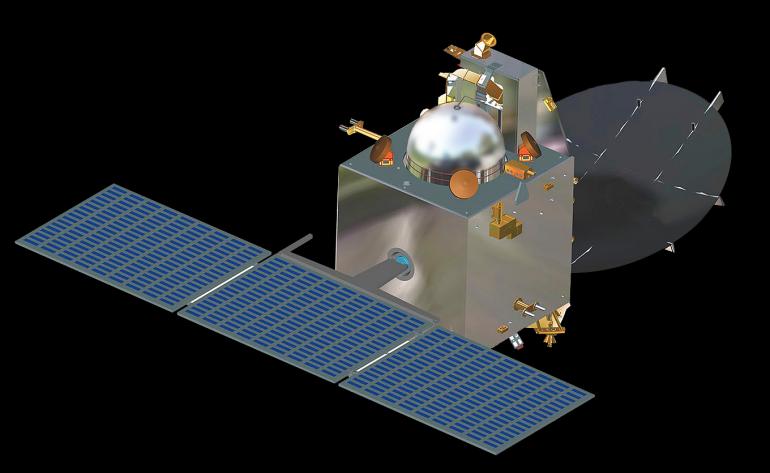Indian Satellite Now In Orbit Around Mars
I have covered the Indian space program in previous posts. While not as sophisticated or extensive as some other national space programs, India reached an important milestone with its first interplanetary mission. India's Mars probe entered orbit around Mars on September 24, 2014. The Mars Orbital Mission (MOM) or (Mangalyaan in Sanskrit) was launched in November of 2013 from the Satish Dhawa Space Center on a Polar Satellite Launch Vehicle.
The probe weights about a thousand pounds with only thirty three pound of payload. It is a cube that is about five feet on a side. India has categorized the mission as a "technology demonstrator project to develop the technologies for design, planning, management, and operations of an interplanetary mission." MOM is intended to orbit Mars for at least six months, radioing back information about Mars.
The MOM mission started with a feasibility study in 2010 and was approved in August of 2012 by the Indian government. The total project cost is estimated at seventy four million dollars. This cost is actually quite low for an interplanetary mission. The Indians used a modular system and limited the number of ground tests. Labor costs were lower than they would have been in the United States. Incorporation of technologies developed in India also helped to keep the costs down. MOM design was much simpler and the payload less complicated than the recent NASA MAVEM mission to Mars. Where MOM cost is seventy six million dollars, the U.S. MAVEN mission to Mars cost six hundred and seventy million dollars, nearly ten times as much.
The scientific equipment on MOM includes:
1) A Lyman-Alpha Photometer will measure the relative abundance of deuterium and hydrogen in the upper atmosphere of Mars which will help clarify water loss from the Martian atmosphere.
2) Methane Sensor for Mars will measure the methane in the Martian atmosphere and sources on the Martian surface.
3) Mars Exospheric Neutral Composition Analyzer is a mass analyzer to measure the neutral composition of particles in the exosphere.
4) Thermal Infrared Imaging Spectrometer will capture the temperature and emissivity of the Martian surface which will assist in locating minerals on Mars.
5) Mars Color Camera to capture images of the Martian surface in the visible spectrum.
The Indian people are very excited about sending a mission to Mars. Other countries are praising the achievement. For the past twenty years, India has been focused on developing a space industry because it was seen to be a stimulus for high tech industries such as communications. The low cost of the mission might attract other nations as customers for Indian space services. European countries and the U.S. are already buying space components from India. On the other hand, there are private companies entering the space services industry such as SpaceX which recently won an award from NASA to ferry astronauts and supplies into space.
Artist's rendering of the Indian MOM spacecraft:
